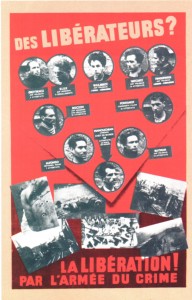
By Laurel Corona
SAN DIEGO — As an author of both fiction and nonfiction, I know I should be patient with the time it takes for characters to be introduced, background and setting to be established, and a narrative to coalesce and move forward. I must admit, however, that when it comes to films, I am perhaps not patient enough. It annoys me to be introduced to a dozen or more characters in the first ten minutes, many of who look bankably alike in physical attractiveness and none of whom adequately differentiates who he or she is by revelatory action or dialogue. I can see why a director might think a series of as-yet unconnected vignettes might create a sense of dynamism, complexity, and excitement, but when only the advertising copy has provided any context for the film, I can’t help but develop a bit of a “show me” attitude. “Just wait,” the director seems to be saying, “it will all make sense soon,” to which I reply mentally, “yes, but I’m not sure yet that I care.”
I had all those feelings watching Army of Crime, and though I normally don’t personalize my reviews, I feel I need to here because I suspect that I may be all wrong about this film.
It has been highly critically acclaimed, and is the work of a renowned director, Robert Guédiguian (Marius et Jeannette, Le Voyage en Arménie). It has an excellent cast. It has a highly effective opening scene, in which a busload of people are being driven through Paris. Scenes of normal, happy life go on outside the windows of the bus, while a voiceover recites a series of names, each followed by the statement “died for France.” The viewer presumes (correctly, it turns out) that the names belong to the people on the bus, who are being taken to their execution.
One can’t help but notice that the names are not typically French, but reflect the diverse and growing immigrant population of Paris at the time. This turns out to be important, because the film is about emigrés fleeing repression elsewhere. The characters on the bus (many of them communists from poor and war-torn Eastern Europe) bought into the dream of Liberté, Egalité, Fraternité and were willing to die for it–more willing than many Parisians themselves. Chief among these real-life protagonists is Missak Manouchian (ably played by Simon Abkarian) an Armenian poet and pacifist turned soldier in the cause of fighting Fascism.
Abkarian has the world weary look that makes him perfect in the role of the deeply conflicted, soulful poet, and his wife Mélinée (played by the beautiful Virginie Ledoyen) makes an appealing counterweight. The need for organized resistance also draws in young firebrands such as Marcel Rayman (Robinson Stévenin), and Thomas Elek (Grégoire Leprince-Ringuet). In the film, these young men’s families range from quietly supportive to hostile to the risks their children are taking. Not all the Manouchian Group was male, however, and the film also honors the role of Olga Bancic (Olga Legrand), who paid, as the others did, with her life for the actions the group committed against the Nazis and French collaborators.
The problem of pacing, alluded to above, is that Guédiguian decided to focus on how a number of individuals performing separate acts of sabotage and murderous violence came together as a group. Well over half the film has passed before this happens. Even when it does, many of the characters remain too undifferentiated to drive any more than a generic interest in seeing them prevail, and even then because fighting back was the right thing to do, not because these individuals’ stories and motivations are compelling.
Even after the focus of the film shifts to a more organized resistance, the storyline remains fragmented and elusive. I suppose that’s because that’s what the resistance was all about–individuals and small groups carrying out actions with as little knowledge or contact with each other as possible. The Manouchian group barely gets going in the film before their betrayal, arrest, torture, and death, so even at the end, the film doesn’t coalesce, except in the grim and inexorable horror at the fate of all those who dared defy the Nazis and their French confrères.
It would help before seeing the film to know more than I did about the history of the Manouchian Group. Perhaps the director should have considered one of those short screen rolls before the action begins (in the theatre one does not have the option of stopping, as I did at home, to do an online search to clarify the story). Since Guédiguian did not do this, I will provide background here, because I think it will resolve for other viewers some of the difficulties I had with the film.
 The title of the film comes from L’Affiche Rouge (the Red Poster–shown here), designed to undercut sympathy for the Manouchian group, 23 of whom had been executed shortly before the poster was plastered all over the city. “Liberators?” the poster reads. “Liberation by the Army of Crime!” Of the group, 10 have photographs in the poster, including Manouchain, Elek, and Rayman. The identity of all 10 as a foreigner and/or a Jew (Jews account for 7 of the 10 in the poster and 11 of the 23 executed) is indicated, as well as the number of terrorist attacks they were involved in. Several had long histories of resistance despite their youth (both Elek and Rayman died before their 21st birthday), having belonged to both Jewish and Communist political movements, most notably the group known as MOI, the Immigrant Workforce Movement. The FTP was an armed faction of gunmen and saboteurs attached to the MOI, and Manouchian, in his late thirties, became one of its leaders. Rayman, Elek, Bancic, and others became part of the subgroup Manouchian led.
The title of the film comes from L’Affiche Rouge (the Red Poster–shown here), designed to undercut sympathy for the Manouchian group, 23 of whom had been executed shortly before the poster was plastered all over the city. “Liberators?” the poster reads. “Liberation by the Army of Crime!” Of the group, 10 have photographs in the poster, including Manouchain, Elek, and Rayman. The identity of all 10 as a foreigner and/or a Jew (Jews account for 7 of the 10 in the poster and 11 of the 23 executed) is indicated, as well as the number of terrorist attacks they were involved in. Several had long histories of resistance despite their youth (both Elek and Rayman died before their 21st birthday), having belonged to both Jewish and Communist political movements, most notably the group known as MOI, the Immigrant Workforce Movement. The FTP was an armed faction of gunmen and saboteurs attached to the MOI, and Manouchian, in his late thirties, became one of its leaders. Rayman, Elek, Bancic, and others became part of the subgroup Manouchian led.
They carried out almost thirty successful attacks on German interests from August to November 1943, including the assassination of General Julius Ritter, who was responsible for the deportation of French people for forced labor in Germany. Their time to resist was short, however. In March 1943, Manouchian carried out his first armed action, and by November he and his comrades were arrested. They were executed the following February, a little less than a year from the time they had begun working together.
The film is unremittingly dark, both in tone and in style of filming. As I watched, I found myself wondering if perhaps there was something wrong with the copy I received, since so many scenes were shot in such deep shadow it was difficult to see anything at all. Viewers who see it on screen may have a slightly different experience, but it does seem clear that the director was going for a very moody and grim feeling throughout, a symbolic and real darkness entirely appropriate to the subject matter, offset only by a beautiful musical score focusing on classics and popular French songs of the time.
Viewers who come armed with some knowledge of the events described may find this an outstanding, non-sanitized, and non-sugarcoated contribution to Holocaust films. Others, especially those with the patience to wait for a director to have his say in the way he wishes, may end up feeling the same. For the rest, this film falls short in conveying to broader audiences a compelling new set of heroes of the French Resistance.
Army of Crime screens as part of the San Diego Jewish Film Festival on Saturday February 12, at 8:30 p.m. at the Clairemont Reading 14.
*
Corona is a professor of humanities at San Diego City College, and a novelist